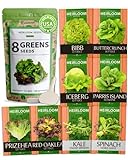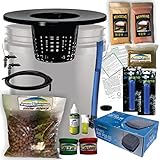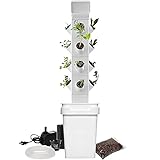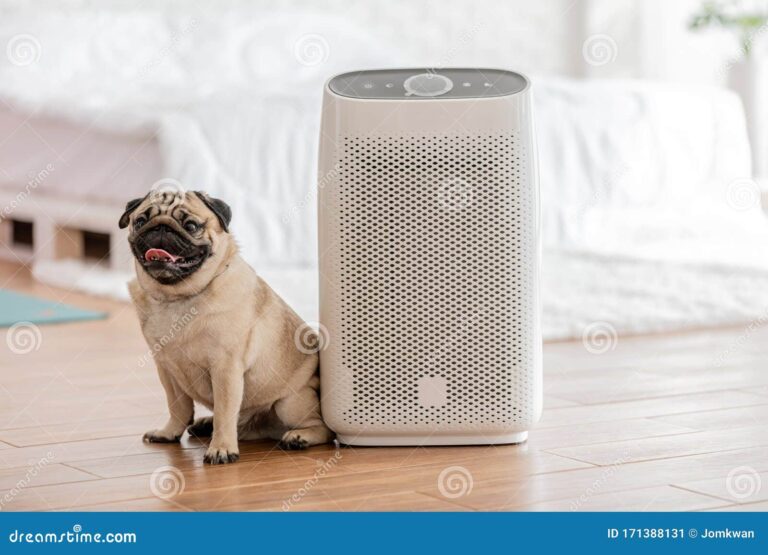Hydroponic Gardening Beginner’s Guide
Grow Your Green Thumb with our Hydroponic Indoor Gardening Beginner’s Guide Have you ever enviously eyed your neighbor’s lush vegetable garden bursting with ripe tomatoes and crispy lettuce? Do you wish you could grow your own produce but lack the outdoor space? Hydroponic gardening offers the perfect solution for aspiring green thumbs with limited time and room.
What is Hydroponic Gardening?
Hydroponics is a method of growing plants without soil. Instead, the roots dangle directly into a nutrient-rich water solution that gives plants exactly what they need to thrive. A hydroponic system can be set up anywhere – indoors, outdoors, even on your balcony or rooftop!
Plants grown hydroponically develop faster and often yield up to 30% more compared to conventional gardening. This is because the roots absorb nutrients and oxygen more efficiently from the water solution compared to compacted soil. Plus, you have complete control over the plant food, light, temperature, and other factors in a hydroponic environment.
The Smart Garden 9


Ideal for growing herbs, fruits, flowers and vegetables all year round


Let’s explore why hydroponic gardening beats traditional soil gardening:
Higher Yields & Faster Growth with Hydroponic Gardening
With the perfect balance of nutrients and environmental conditions, hydroponically grown plants develop up to 25% faster. You can be munching on crisp lettuce just 21 days after planting seeds! Plus, plants expend less energy developing roots making them more productive overall.
Precise Control Over Nutrients & pH
Unlike guessing with soil amendments, hydroponic systems allow you to dial in the optimal nutrient levels and acidity for vigorous growth. Just monitor and adjust the water solution when needed.
Environmentally Friendly & Water-Efficient
Soil-based gardening can deplete nutrients in the ground over time. With hydroponics, there is no soil degradation. Hydroponic systems also recirculate and reuse drained water and nutrients, using up to 90% less water than conventional methods.
Grow Anywhere: Small Footprint & Adaptable
Forget large gardens or big backyards. Hydroponic systems take up very little floorspace. You can even stack systems vertically! Plus they work perfectly on balconies, patios, rooftops, in greenhouses, or right inside your home.
Lower Risk of Pests, Diseases & Weeds
When enclosed properly, hydroponic gardens keep out many insects, fungi, and weeds that plague outdoor gardens. Without soil, there are fewer vectors to transmit plant diseases too. Less chemicals and pesticides are needed as well!
Convinced of the benefits? Let’s explore the most popular hydroponic systems so you can choose the right one for your green thumb goals and budget!
Choosing the Best Hydroponic Gardening System
While plants don’t need soil to grow, their roots do require support, oxygen, water, and nutrients. Different hydroponic systems deliver these plant necessities in various ways. Most fall into one of these categories:
  Click and Grow Smart Garden 9 PRO w/Bluetooth |    AeroGarden Bounty Basic – Indoor Garden with LED Grow Light |   Click & Grow Indoor Herb Garden Kit with Grow Light |
Let’s explore the most common setups:
Nutrient Film Technique (NFT)
Ideal for leafy greens and herbs, NFT systems feature sloped channels or tubes with a thin film of nutrient solution constantly flowing over the exposed roots. Simple and efficient, NFT systems require a pump, timer, and maintenance to ensure adequate flow and nutrients.
| NFT Pros: Excellent oxygenation of roots Simple design | NFT Cons: Height limitations Nutrient solution requires close monitoring |
Best for: Leafy greens, lettuces, herbs
   GOWE Hydroponics system NFT with 54pcs |    HIsource NFT Hydroponics Growing System – 64 Plant Slots Gutter Style NFT Channels |   SDGH Hydroponics System NFT Smart Garden Planter |
  Survival Vegetable Seeds Garden Kit |   Lettuce Seeds for Planting Home Garden – Hydroponics Garden |   Lettuce & Salad Greens Seed Vault |   Romaine Lettuce Seeds for Hydroponics |
Deep Water Culture (DWC)
Sometimes called the “bucket method”, DWC systems suspend plants in perforated pots over a reservoir of oxygenated nutrient solution. The exposed roots dangle directly into the water. Simple, inexpensive, and low-maintenance, DWC systems require air pumps and monitoring to prevent issues like algae growth or oxygen depletion.
| DWC Pros: Inexpensive and simple setup Minimal effort required for operation | DWC Cons: Prone to algae growth and root rot Require air pumps and monitoring |
Best for: Leafy greens, tomatoes, cucumbers, peppers
Aeroponics
Aeroponics is a high-tech method where nutrient solution is misted in a fine spray onto the dangling roots at regular intervals. This maximizes oxygen absorption. However, aeroponic systems require specialized equipment making them more complex and expensive to operate.
| Aeroponic Pros: Very efficient and high-yielding Full control over nutrient delivery | Aeroponic Cons: Expensive and complex equipment Prone to clogs and technical issues |
Best for: Leafy greens, tomatoes, cucumbers, herbs
Ebb & Flow (Flood and Drain)
Ebb and flow systems feature timers that periodically flood trays of plants with nutrient solution then drain. They require a decent sized reservoir and reliable water pump but are otherwise simple to operate and maintain.
| Ebb & Flow Pros: Versatile and adaptable Fewer clogs than drip irrigation | Ebb and Flow Cons: Needs large reservoir More prone to algae or fungi than NFT |
Best for: Leafy greens, tomatoes, cucumbers, herbs, strawberries
  Hydrofarm MGSYS Hydroponic Megagarden Ebb & Flow System |   Hydrofarm Active Aqua Grow Flow Ebb & GRO |   Hydroponic 4 Bucket Ebb and Flow Grow Kit |
Drip Irrigation
Drip irrigation systems deliver nutrient solution from an elevated tank directly onto the root zone of each plant via drippers or micro-spray jets. Customizable and simple enough for beginners, these systems require filtration and maintenance to prevent clogs.
| Drip Irrigation Pros: Customizable to space and plant types Allows different nutrient mixes | Drip Irrigation Cons: Clogging issues Waste from excessive drainage |
Best for: Tomatoes, cucumbers, strawberries, mixed gardens
  DIY Automatic Drip Irrigation Kit, 15 Potted Houseplants Support |   MARS HYDRO Auto Drip Irrigation Kits |   VIVOSUN Professional Automatic Drip Irrigation Kits |
Now that you know the most common hydroponic systems, review this handy comparison chart on a selection of some hydroponic products before deciding on the best one for your needs and budget: All below have a 1-year warranty.
| Product Image | Product Name | Product Type | Number of Plants | Grow Light | Watering System | Dimensions | Price |
|---|---|---|---|---|---|---|---|
  | Click and Grow Smart Garden 9 PRO w/Bluetooth | Smart Garden | 9 | LED | Automatic | 47.2 x 7.9 x 15.8 inches | $299.95 |
   | AeroGarden Bounty Basic | Indoor Garden | 9 | LED | Automatic | 16 x 6 x 8 inches | $199.95 |
  | Click & Grow Indoor Herb Garden Kit with Grow Light | Indoor Herb Garden | 3 | LED | Automatic | 12.6 x 4.7 x 15.7 inches | $99.95 |
   | GOWE Hydroponics system NFT with 54pc | NFT Hydroponics System | 54 | LED | Automatic | 47.2 x 7.9 x 15.8 inches | $1,099.00 |
   | HIsource NFT Hydroponics Growing System – 64 Plant Slots | NFT Hydroponics System | 64 | LED | Automatic | 47.2 x 7.9 x 15.8 inches | $1,199.00 |
Additional buying considerations when selecting a hydroponic system:
- Available space: Consider height limitations and footprint. Vertical stacking systems maximize small spaces.
- Plant types: Leafy greens do well in all systems. Fruiting plants need more oxygen.
- Skill level: Beginners may want to start with plug-and-play kits while experts can build custom systems.
- Budget: Inexpensive: DWC or drip irrigation. Moderate: Media beds. Expensive: NFT or aeroponics.
Now that you know how to choose the ideal hydroponic system, let’s get your plants thriving with proper care and maintenance!
Caring For Your Hydroponic Plants
Starting and operating any hydroponic system takes patience and attentive care. Follow these tips to help your hydroponic plants flourish:
Step 1: Pick Your Plants
Almost any plants suitable for container gardening will thrive hydroponically. Some top picks include:
- Herbs: basil, mint, cilantro, dill, parsley, oregano, thyme
- Lettuces & Greens: arugula, kale, chard, spinach, mixed greens
- Vegetables: tomatoes, peppers, cucumbers, beans, peas, radishes
- Fruits: strawberries, melons, zucchini, squash
- Flowers: chrysanthemums, gerbera daisies
Step 2: Germinate Your Seeds
You can purchase pre-seeded seed pods or starter plants (propagules) specifically for hydroponic systems. However, germinating seeds yourself is more economical.
Follow these seed germination tips before transferring sprouts into your system:
- Soak seeds overnight prior to planting
- Use a seed starting medium like rockwool, perlite, vermiculite or coco coir
- Maintain warm temperature and high humidity
- Provide 14+ hours per day of supplemental LED growing lights
- Keep seeds moist but not soaked
Step 3: Transplant Seedlings
Once sprouted and showing their first true leaves, carefully transplant seedlings into the hydroponic system grow beds/containers.
Gently rinse the starter medium from roots before putting in net cups or directly into system reservoirs. Make sure young roots fully contact nutrient solutions.
Step 4: Monitor & Maintain Ideal Conditions
- Nutrient Solutions:
- Change reservoir water every 2 weeks
- Top off to maintain water levels
- Test and adjust pH and nutrient PPM/EC weekly
- Environment:
- 18-24 hours of light daily
- 75°F (24°C) room temperature
- Good air circulation and ventilation
- Pruning & Harvesting:
- Encourages new growth
- Time varies by plant
Step 5: Manage Issues
Common hydroponic plant problems and their solutions include:
Nutrient Deficiencies
- Identify deficient mobile nutrients (N, P, K, Mg) vs. immobile ones (Ca, S, Fe, B)
- Leaching, pH fluctuations, or inactive salts may lock out nutrients
- Test and adjust nutrient solutions battlefield 4
Pests & Pathogens
- Check for fungus gnats, mites, aphids
- Remove infested plant parts immediately
- Apply organic sprays or introduce predator insects
Equipment Failure
- Fix leaks and clogs in tubing or drippers
- Replace failing water pumps
- Maintain/replace air pumps, timers, grow lights
Poor Growth
- Adjust nutrient concentration, pH
- Increase air circulation and ventilation
- Upgrade lighting or hydro system
Grow Confidently!
I hope this guide gave you a helpful introduction to hydroponic gardening! By understanding the systems and mastering plant care fundamentals, anyone can cultivate bountiful harvests.
Hydroponics empowers both hobby gardeners and commercial farmers to grow quality, high yield crops almost anywhere while using fewer resources.
Ready to take your gardening green thumb to the next level with hydroponics? Check out these resources:
Top Hydroponic Garden Picks
The Best Hydroponic Indoor Gardens of 2023
Happy growing!














